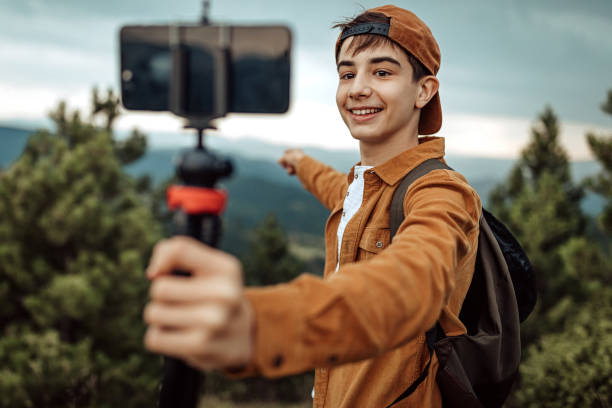Before YouTube: The Unexpected Origins of Vlogging

Long before the advent of YouTube in 2005, the concept of sharing personal video content—a practice we now know as vlogging—had already started taking shape. This blog explores the evolution of vlogging, tracing its roots back to the time when sharing videos was a much more cumbersome process.
The Early Seeds of Vlogging (1980s – Mid 1990s)
The origins of vlogging can be traced back to the 1980s and early 1990s when video cameras became more accessible to the general public. During this era, enthusiasts and early adopters of video technology began experimenting with the idea of creating diary-like videos.
These were essentially the primitive form of today’s vlogs, documenting everyday life, special occasions, and travels. However, the ability to share these personal stories was limited by the technology available; videos often had to be physically mailed to others or shown in person, as online streaming capabilities were non-existent.
Pioneering Vloggers and Their Work (Late 1990s – Early 2000s)
As the internet began to burgeon, pioneering vloggers emerged in the late 1990s and early 2000s. These early vloggers utilized burgeoning web platforms to upload and share their video content, albeit often struggling with slow internet speeds and low-quality video formats. Websites like Justin.tv (which later evolved into Twitch), and even personal blogs, served as platforms for these video diaries. These platforms allowed users to connect with a wider audience, far beyond their immediate geographical location.
The Rise of YouTube and the Vlogging Boom (Mid 2000s – Present)
The launch of YouTube in 2005 marked a significant turning point for vlogging. It provided a user-friendly platform that made uploading, sharing, and discovering videos remarkably easy. As broadband internet became more widespread, YouTube’s influence grew exponentially, leading to the vlogging boom.
This era saw the rise of vloggers who built massive followings and turned their video blogging into professional careers, influencing media and culture worldwide.
Challenges and Limitations of Pre-YouTube Vlogging
Despite the growing interest in video blogging, early vloggers faced numerous challenges. The major hurdles included limited access to technology, high costs of video equipment, and the complexities of editing and converting videos for web use. Some may still use old film cameras like 8mm, necessitating specialized video transfer services to help convert their 8mm content into digital videos.
The Legacy of Pre-YouTube Vlogging
The legacy of these early vloggers is profound. They laid the groundwork for the personal video content industry, showing that there was a keen interest in authentic, person-driven content. Their perseverance through technical limitations highlighted the human desire to connect and share personal experiences, paving the way for the platforms and influencers that dominate the digital landscape today.
The Synergy of Vlogging and Social Media
The synergy between vlogging and social media has transformed how we consume media. Social platforms like Instagram, TikTok, and Facebook have integrated video sharing into their core features, making vlogging an integral part of our social media experience. This integration has further democratized content creation, allowing anyone with a smartphone to share their life through video.
Read More: How To Plan and Prepare For Your First YouTube Channel
Conclusion
The journey from these early experiments to today’s streamlined, social media-driven vlogging illustrates not just technological advancement but a shift in how we communicate and share our lives. As we look forward, the evolution of vlogging will continue to be an exciting aspect of digital media, reflecting our innate desire to tell our stories through video.

